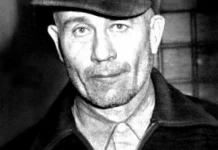That what is Japanese is fashionable is something that does not surprise anyone: from the obsession with spatial harmony promoted by feng-shui, to the rise of sushi restaurants, Japanese culture has crossed borders and has reached the whole world. . Another new Japanese word that has become known is the ‘haiku’, but what is a haiku
We are going to deal with it in the next few lines.
- Discover more: 12 poems for simple and stimulating children.
What is haiku?
In the Japanese written tradition, ‘haiku’ is known as a genre in itself. These are short poems of few syllables, where the rhyme is not as important as the message contained in such short lines.
In general, the structure that haiku usually follow is three lines in total, with five, seven and again five syllables each . However, originally, the haiku had reached an extension of only a single verse.
What topics is a haiku about?
Haiku poems usually deal with the emotions that arouse the phenomena that we can contemplate in nature(for example, the fall of the leaves of the trees in autumn) or about any everyday event that occurs on a daily basis, from the simplest to the most complex.
To understand what a haiku poem is, we also have to take into consideration that these short compositions allude to two ideas or issues that, a priori, are independent and are linked in the haiku.
Thus, the author’s double challenge is to try to move the reader in a few words and, on top of that, using elements that are not expected to be found together in such a short structure. For his part, the reader’s task is to try to understand what the author is trying to convey with the haiku.
The kigo, the keyword of haiku
We cannot try to explain what haiku is without first stopping along the way to understand the elements of which it is composed. In this sense, we have elkigo, a word or statement that somehow evokes the season of the year that is spoken of in the haiku.
Nature and spring, common themes of haiku. | Image by: Galen Crout / Unsplash.
In this way, direct and not at all subtle mentions such as “summer days” or “autumn” can act as kigo, as can more subtle and even metaphorical mentions, such as “falling leaves”, not to speak directly of the autumn, that’s when this happens.
The 4 great haijin authors
We know by ‘haijin’ or ‘haikistas’ in Spanish, the writers of these short poems that are the haiku. The following four creators have become a benchmark in this art, thanks to their mastery and a technique as beautiful as it is refined, in the art of writing these messages.
1. Matsuo Basho (1644 – 1694)
Basho is one of Japan’s most widely read haiku authors. This writer considered himself a citizen of the world , so, on his travels, he dedicated himself to seeking inspiration to help him compose his verses.
Of his most representative works, Sendas de Oku stands out, where his wanderlust is reflected and all the experiences that he was interested in highlighting from his pilgrimage around the globe are collected.
2. Yosa Buson (1716 – 1784)
The second of the four great authors of haikus was a disciple of Bashō, after his change of residence to Edo, a city now known as ‘Tokyo’. In addition to being a great haijin, Buson was a man dedicated to art, becoming also a skilled painter , a discipline for which he would be remembered for a long time.
However, years later, his work in this field was also recognized, which he seasoned with a personal style that made it different from what had been seen until then.
3. Kobayashi Issa (1763 – 1828)
Issa’s writing stands out for his special sensitivity when it comes to capturing with intensity what he writes about , a feeling that reaches the reader, who manages to immerse himself in his haiku without problems.
Since his childhood, Issa was linked to this type of poetry, an art that he studied under the guidance of Master Bashō, whom he idolized. The hardships he went through (the premature death of his father from typhoid fever or the constant family disputes over inheritance) gave Issa ideas for his work, although he had also talked about animals or his tour of the country.
4. Masaoka Shiki (1867 – 1902)
After Issa’s death, the beautiful tradition of writing haikus had been kept alive by writers who had by no means shone in this field as much as any of the three great geniuses up to that point.
Fortunately, Shiki appeared to revitalize this practice so deeply rooted in the Japanese empire , inaugurating a new trend that would be characterized by ideas ahead of its time, among which his criticism of the respectable Bashō and Issa stood out.
Shiki considered that haiku should serve as a chiselling tool for art.and that life experiences or emotions had no place; For this reason, he proposed to banish the ancient conceptions associated with these poems, perpetuated through the study of the great authors of the past that he was so determined to question.
The 15 Best Haiku Poems
Below we present ten beautiful haiku poems that we hope will captivate you with their beautiful verses.
1. Courage, snail / that climbs slowly / to Mount Fuji
One of the haikus belonging to Kobayashi Issa about an observable phenomenon of nature as everyday as a patient snail trying to climb a mountain.
2. Here and there in the archipelago / lights come on / the sea in spring
On the other hand, we have this short poem byMasaoka Shiki , who promoted that artists should disassociate themselves from the proposals of the hajin of the past and spoke in favor of freedom of writing.
3. Yesterday is over / Today is over too / Spring is gone
Haiku written by Yosa Buson , whose kigo is the word “spring”.
4. Last night I covered / my sleeping children / and the noise of the sea
We have not talked about him in the previous section, but Watanabe Hakusen (1913 – 1969) was one of the most important creators of haiku in this tradition.
5. Is it an empire / that light that goes out / or a firefly
Western writers like Jose Luis Borges (1899 – 1986)they also composed some of the best haiku of recent times.
6. Cut a branch / and thin it out better / through the window
Masaoka Shiki shows us once again that beautiful haiku can be written just by looking around us.
7. The dew trembles / and the purple leaves / and a hummingbird
Mario Benedetti (1920 – 2009) also joined the haikus fashion with this one that deals with the effect of the flapping of the wings of a hummingbird on the dew perched on the leaves of a plant.
8. The scarecrow looks human when it rains
Natsume Seibi (1746 – 1817) had the brilliant idea of proposing with this haiku poem that a scarecrow looks human after the rain.
9. The black night is sea / the cloud is a shell / the moon is a pearl
The Mexican poet Juan Jose Tablada dared with this poetic genre, writing in a few verses a similarity between the sky of a dark night and the silvery moon; With the blue sea and a shining pearl that shines.
10. There are few things / as deafening / as silence
Mario Benedetti makes use of a hyperbole to describe the extent to which silence can fill a space when there is no noise to cover it.
11. Flee the dew / In this dirty world / I do nothing
Another example of the sensitivity with which Kobayashi Issa is able to almost make us feel those events that escape our attention if we don’t stop for a moment to contemplate them, like the morning dew dissolving as the day progresses.
12. Rain of flowers / A crow searches in vain / for its nest
Nature is present in some of the simplest haiku, like this one by Matsuo Basho, in which a crow cannot find its nest because it has been covered by a blanket of flowers.
13. Is it an empire / that light that goes out / or a firefly
Writers of the stature of Jose Luis Borges have also left their particular contribution to Japanese-style poetry. The Argentine asks us if that light that he sees in the distance is that of a small firefly or the last gasps of a great empire.
14. Made of air / between pines and rocks / the poem sprouts
The Mexican Nobel Prize for Literature, Octavio Paz, offers us this beautiful composition about how what inspires us to write floats in the environment; we just have to know how to listen to inspire us.
15. Rain last night / covered this morning /by fallen leaves
Io Sōgi was a great ‘haijin’ master of the late fifteenth century, a follower of Zen philosophy and always in contact with the nature around him.
- You can also read: 10 poems of life and for life.





































